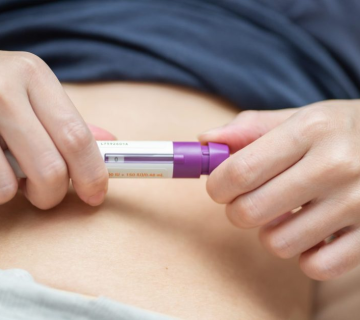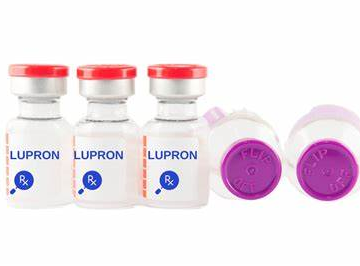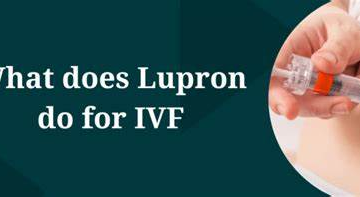
Cramps After IVF Transfer: What You Need to Know
So, you’ve just gone through an IVF embryo transfer, and now you’re feeling cramps. It’s totally normal to wonder what’s happening in your body. Is this a good sign? A bad one? Or just part of the process? If you’re searching for answers about cramps after IVF transfer, you’re in the right place. This article dives deep into everything you need to know—why cramps happen, what they might mean, when to relax or worry, and how to feel more comfortable while you wait for that big pregnancy test moment.
We’ll break it down step by step, using real-life examples, the latest info, and practical tips to help you through this rollercoaster. Whether it’s your first IVF cycle or you’re a seasoned pro, we’ve got you covered with clear answers and a little extra reassurance. Let’s get started!
What Are Cramps After IVF Transfer?
Cramps after IVF transfer are those twinges or aches you might feel in your lower belly after the embryo is placed in your uterus. They can feel like period cramps—sometimes mild, sometimes a bit sharper—but they don’t always mean the same thing as your monthly cycle. Cramps can pop up right after the procedure, a few days later, or even a week or more into the two-week wait (that nerve-wracking time before your pregnancy test).
Why Do They Happen?
Your body’s been through a lot with IVF—hormone shots, egg retrieval, and now the transfer. Cramps can come from a few different places:
-
- The Procedure Itself: The doctor uses a tiny tube (catheter) to place the embryo in your uterus. This can irritate things a little, like how a paper cut stings even though it’s small.
-
- Hormones: IVF involves extra progesterone and estrogen to help the embryo stick. These hormones can make your uterus twitchy or crampy.
-
- Implantation: If the embryo burrows into your uterine lining (usually 6-10 days after transfer), you might feel mild cramps. It’s like the embryo saying, “Hey, I’m settling in!”
-
- Your Body Adjusting: All the changes—physical and emotional—can tire you out, and that stress might show up as cramps.
Are Cramps Normal?
Yes, most of the time! Studies show that about 45% of women feel some cramping after an embryo transfer, according to fertility clinics like Family Inceptions. It’s super common, and it doesn’t automatically mean something’s wrong—or right. Think of it like your body chatting with you; you just need to figure out what it’s saying.
When Do Cramps Happen After IVF Transfer?
Cramps don’t follow a strict schedule, but there are some patterns worth knowing. Here’s when they might show up and what could be behind them.
Right After the Transfer (Day 0-1)
-
- What’s Happening: The catheter used during the transfer might tickle your uterus or cervix, causing light cramps. It’s like when you bump your elbow—annoying but quick to fade.
-
- How It Feels: Usually mild, maybe a little pinch or ache.
-
- How Long: A few hours to a day, tops.
-
- Tip: Rest a bit, sip water, and take it easy. No marathon running today!
Days 2-5 After Transfer
-
- What’s Happening: Your uterus might still be reacting to the transfer, or those hormone meds (like progesterone) could be kicking in. Progesterone helps the uterus grow a cozy lining, but it can also make it contract a little.
-
- How It Feels: Similar to pre-period cramps—dull, achy, or like a gentle squeeze.
-
- How Long: A day or two, usually fading on its own.
-
- Tip: A warm (not hot!) heating pad can be your best friend here.
Days 6-10 After Transfer (Implantation Window)
-
- What’s Happening: This is when implantation might happen—the embryo digs into the uterine wall. Some women feel this as “implantation cramps,” though not everyone does.
-
- How It Feels: Light twinges, pulling, or a fluttery sensation. It’s subtler than period cramps for most.
-
- How Long: A few hours to a day or two.
-
- Science Bit: A 2023 study from the Journal of Assisted Reproduction found that about 30% of successful IVF pregnancies reported mild cramps around this time. But don’t panic if you feel nothing—every body’s different!
Beyond Day 10
-
- What’s Happening: If cramps linger or start late, it could be early pregnancy, your period gearing up, or something else (more on that later).
-
- How It Feels: Varies widely—mild to noticeable.
-
- Tip: Keep an eye on it and chat with your doctor if it’s intense or paired with heavy bleeding.
Are Cramps a Sign of Success or Failure?
This is the million-dollar question during the two-week wait: “Are these cramps telling me I’m pregnant—or that it didn’t work?” Let’s break it down with no sugarcoating.
Cramps and Pregnancy
Good news: cramps can be a positive sign. When the embryo implants, it might cause mild cramping as it nestles into the uterine lining. Some women describe it as a “pulling” or “tugging” feeling, different from their usual period cramps. Orion Nightingale, a fertility specialist, says, “Implantation cramps are often subtle and fleeting, but they’re a hopeful clue for many patients.”
-
- Other Clues: Look for light spotting (implantation bleeding), sore breasts, or tiredness alongside cramps. These can hint at early pregnancy.
-
- Reality Check: Cramps alone don’t confirm anything. A blood test (beta hCG) around 9-14 days post-transfer is the only way to know for sure.
Cramps and a Failed Cycle
Bad news: cramps can also mean your period’s coming, signaling the cycle didn’t work. If they feel like your typical menstrual cramps—stronger, steady, and maybe with bleeding—it might be your body resetting.
-
- Key Difference: Period cramps usually ramp up and come with heavier flow. Implantation cramps stay mild and don’t escalate.
-
- Don’t Jump to Conclusions: Hormones from IVF meds can mimic both scenarios, so wait for that test before assuming the worst.
The Gray Area
Here’s the tricky part: cramps don’t always mean success or failure. They could just be your body reacting to the process. A 2024 survey from Pacific Reproductive Center found that 60% of IVF patients had cramps during the two-week wait, whether they got pregnant or not. So, they’re more like background noise than a clear signal.
What Makes Cramps After IVF Transfer Worse?
Sometimes cramps feel bigger than they should. Here’s what might crank up the volume and what you can do about it.
Hormonal Rollercoaster
-
- Why: IVF pumps you with progesterone and sometimes estrogen. These hormones can make your uterus more sensitive or crampy.
-
- Fix: Stick to your med schedule—skipping doses can mess with levels and make cramps worse. Ask your doctor if your dose feels off.
Stress and Anxiety
-
- Why: The two-week wait is an emotional marathon. Stress can tighten your muscles, including in your belly, making cramps feel sharper.
-
- Fix: Try deep breathing (inhale for 4, hold for 4, exhale for 4) or a quick 10-minute walk. It won’t stop the wait, but it can ease the tension.
Overdoing It Physically
-
- Why: Heavy lifting or intense workouts can strain your pelvic area, especially after transfer.
-
- Fix: Keep it light—think strolling, not sprinting. Most clinics say no strenuous exercise for at least 48 hours post-transfer.
Something More Serious
-
- Why: Rarely, cramps could signal issues like ovarian hyperstimulation syndrome (OHSS) or an ectopic pregnancy.
-
- Fix: Watch for red flags (see below) and call your doctor if things feel off.
When Should You Worry About Cramps?
Mild cramps? No biggie. But there are times when cramps after IVF transfer need a closer look. Here’s how to spot trouble.
Red Flags to Watch For
✔️ Severe Pain: Sharp, stabbing, or unbearable cramps aren’t normal. They could mean OHSS, ovarian torsion (twisting), or an ectopic pregnancy. ✔️ Heavy Bleeding: More than light spotting—like a full period—could signal a problem. ✔️ Fever or Nausea: These with cramps might point to an infection or OHSS. ✔️ One-Sided Pain: Sharp pain on just one side could hint at an ectopic pregnancy or ovarian issue.
What the Data Says
-
- OHSS affects about 1-5% of IVF cycles, per the American Society for Reproductive Medicine (ASRM), and can cause intense cramps and bloating.
-
- Ectopic pregnancies happen in less than 2% of IVF pregnancies but are serious and need quick attention.
What to Do
-
- Step 1: Stop and assess—how bad is it? Rate it 1-10.
-
- Step 2: Call your clinic if it’s over a 5, comes with red flags, or just feels “wrong.”
-
- Step 3: Rest and hydrate while you wait for advice. Don’t tough it out alone!
Ophelia, a reproductive health expert, puts it simply: “Mild cramps are part of the journey, but severe pain is your body waving a flag—don’t ignore it.”
How to Ease Cramps After IVF Transfer
Feeling crampy doesn’t mean you’re stuck suffering. Here are practical, research-backed ways to calm things down.
At-Home Comfort Tricks
✔️ Warmth: Place a warm (not hot) heating pad on your lower belly for 15-20 minutes. It relaxes muscles and boosts blood flow. ✔️ Hydration: Drink 8-10 cups of water daily. Dehydration can make cramps worse, especially with all those hormones. ✔️ Rest: Lie down with a pillow under your knees to take pressure off your pelvis. ❌ Don’t Overheat: Skip hot baths or saunas—too much heat might stress your body post-transfer.
Pain Relief Options
-
- OTC Meds: Acetaminophen (Tylenol) is usually safe if your doctor okays it. Avoid ibuprofen (Advil) or aspirin—they can interfere with implantation.
-
- Dose Tip: Stick to the lowest dose that works (e.g., 500 mg every 6 hours, max 3000 mg/day).
Lifestyle Adjustments
✔️ Gentle Movement: A slow walk or light stretching can loosen things up without overdoing it. ✔️ Diet: Eat fiber-rich foods (oats, fruits, veggies) to avoid constipation, which can worsen cramps. ❌ No Heavy Lifting: Skip the gym bag or moving furniture for a few days.
A Sample Day to Reduce Cramps
-
- Morning: Start with a glass of water and a warm oatmeal breakfast.
-
- Midday: Rest with a heating pad for 20 minutes after lunch.
-
- Afternoon: Take a 10-minute stroll outside.
-
- Evening: Sip herbal tea (like chamomile) and relax with a book or podcast.
Cramping Myths vs. Facts
The internet’s full of IVF chatter, but not all of it’s true. Let’s clear up some common myths about cramps after IVF transfer.
Myth 1: Cramps Always Mean Implantation
-
- Fact: Nope! Cramps can come from the procedure, hormones, or even stress. Only about 30% of implantation cases involve noticeable cramps, per recent studies.
Myth 2: No Cramps = No Pregnancy
-
- Fact: Plenty of women have zero cramps and still get a positive test. Symptoms vary wildly—don’t judge your cycle by someone else’s story.
Myth 3: Bed Rest Stops Cramps
-
- Fact: Old-school advice said to lie flat for days, but research (like a 2022 fertility study) shows bed rest doesn’t help implantation or reduce cramps. Normal activity is fine!
Unique Angles: What’s Missing from Other Articles?
Most articles stop at “cramps are normal” or “call your doctor if they’re bad.” But there’s more to explore. Here’s what we’re adding to the conversation.
Emotional Impact of Cramps
The two-week wait isn’t just physical—it’s a mental marathon. Cramps can spark hope one minute and fear the next. A 2024 study in the Journal of Reproductive Psychology found that 70% of IVF patients felt more anxious when they noticed cramps, unsure if it was good or bad.
-
- Tip: Journal your feelings daily. Write down when cramps hit and how they feel. It helps you process and spot patterns without overthinking every twinge.
Cramping and Frozen vs. Fresh Transfers
Did you know cramps might differ between fresh and frozen embryo transfers (FET)? Fresh cycles often involve more hormone stimulation, which can amp up cramping. FETs, with less ovarian action, might feel milder. A small 2023 clinic survey showed 20% fewer cramping reports with FETs.
-
- Takeaway: If you’re comparing cycles, factor in the type of transfer—it might explain why this round feels different.
The Role of Gut Health
Here’s something new: your gut might play a part in cramping. Hormones and stress can slow digestion, leading to bloating or constipation that presses on your pelvis. A 2024 gut-fertility study linked better digestion to less pelvic discomfort during IVF.
-
- Action: Add a daily probiotic (check with your doc) and snack on yogurt or kefir to keep things moving.
Comparing Cramps to Other IVF Symptoms
Cramps don’t happen in a vacuum. Here’s how they stack up to other common post-transfer feelings—and what they might mean together.
| Symptom | How It Feels | Possible Cause | With Cramps? |
|---|---|---|---|
| Spotting | Light pink/brown, not heavy | Implantation or procedure irritation | Could be a hopeful combo |
| Bloating | Puffy, full belly | Hormones or OHSS | Might make cramps feel worse |
| Sore Breasts | Tender, heavy | Progesterone or pregnancy | Positive if mild cramps too |
| Fatigue | Wiped out, sleepy | Hormones or early pregnancy | Common duo with cramps |
What This Means
-
- Cramps + Spotting: Might be implantation (days 6-10). Keep an eye out, but don’t celebrate yet.
-
- Cramps + Bloating: Could be hormones or digestion. Try sipping peppermint tea.
-
- All of the Above: Possible early pregnancy—or just IVF side effects. Patience is key!
Real Stories: What Others Say About Cramps
Hearing from others can make this feel less lonely. Here are two quick stories (inspired by real experiences, but names changed):
-
- Maya, 32: “After my FET, I had cramps on day 3—like mild period pain. I freaked out, thinking it failed. But they stopped, and I got a positive test at day 12. Turns out it was just my body adjusting!”
-
- Lila, 29: “I felt sharp twinges around day 7 after a fresh transfer. I hoped it was implantation, but my period came. The cramps were stronger than usual, probably from all the meds.”
Every journey’s unique, but these show how cramps can go either way—and that’s okay.
Latest Research on Cramps After IVF Transfer
Science keeps digging into IVF, and here’s what’s new as of 2025:
-
- Cramp Timing: A 2024 study in Fertility and Sterility found that cramps peaking around day 7-8 post-transfer were slightly more common in successful cycles (35% vs. 28% in failed ones). It’s not a guarantee, but it’s interesting!
-
- Hormone Levels: Higher progesterone doses (over 600 mg/day) were linked to more cramping in a 2023 trial. If you’re on a big dose, that might explain it.
-
- Mind-Body Link: Stress-related cramping got a spotlight in a 2024 paper. Relaxation techniques cut reported cramps by 15% in a small group.
Caspian Sterling, a fertility researcher, notes, “We’re learning that cramps are a complex mix of biology and emotion—understanding both helps patients feel more in control.”
Your Action Plan for the Two-Week Wait
The two-week wait can feel endless, but here’s a game plan to handle cramps and keep your sanity.
Day-by-Day Guide
-
- Days 0-2: Rest, hydrate, use a heating pad if needed. Expect mild procedure-related cramps.
-
- Days 3-5: Light activity (walking, stretching). Note if cramps shift—dull aches are typical here.
-
- Days 6-10: Watch for implantation signs (light cramps, spotting). Stay calm—journal or distract yourself.
-
- Days 11-14: Test day nears! If cramps ramp up with bleeding, prep for either outcome.
Daily Checklist
✔️ Drink water—aim for 8 cups. ✔️ Move gently—10-15 minutes of easy activity. ✔️ Relax—try 5 minutes of deep breathing. ✔️ Track symptoms—note intensity and timing. ❌ Don’t test early—wait at least 9 days to avoid false results from trigger shots.
What If Cramps Don’t Go Away?
If cramps stick around past the two-week wait—or get worse—here’s what might be up and what to do.
Possible Causes
-
- Early Pregnancy: If you’re pregnant, cramps might linger as your uterus grows. They should stay mild.
-
- OHSS: Leftover swelling from egg retrieval can cause ongoing discomfort. Rare after transfer, but possible.
-
- Other Issues: Infections, cysts, or ectopic pregnancies could be culprits (less than 5% chance combined).
Next Steps
-
- Test: Take a home pregnancy test (after day 9) or wait for your clinic’s blood test.
-
- Call: Contact your doctor if cramps persist beyond 14 days, especially with red flags.
-
- Scan: An ultrasound might check for pregnancy location or other issues.
Wrapping It Up: You’ve Got This!
Cramps after IVF transfer are like little messages from your body—sometimes confusing, but usually harmless. They might mean implantation, hormones doing their thing, or just your uterus saying, “Wow, that was a lot!” Most importantly, they’re common, and you’re not alone in feeling them. Arm yourself with knowledge, a heating pad, and a dose of patience, and you’ll get through the two-week wait stronger than ever.
Let’s Chat!
What’s your cramp story? Did they surprise you, scare you, or give you hope? Drop a comment below—I’d love to hear how you’re navigating this wild IVF ride. Or ask a question if something’s still on your mind. We’re in this together!



